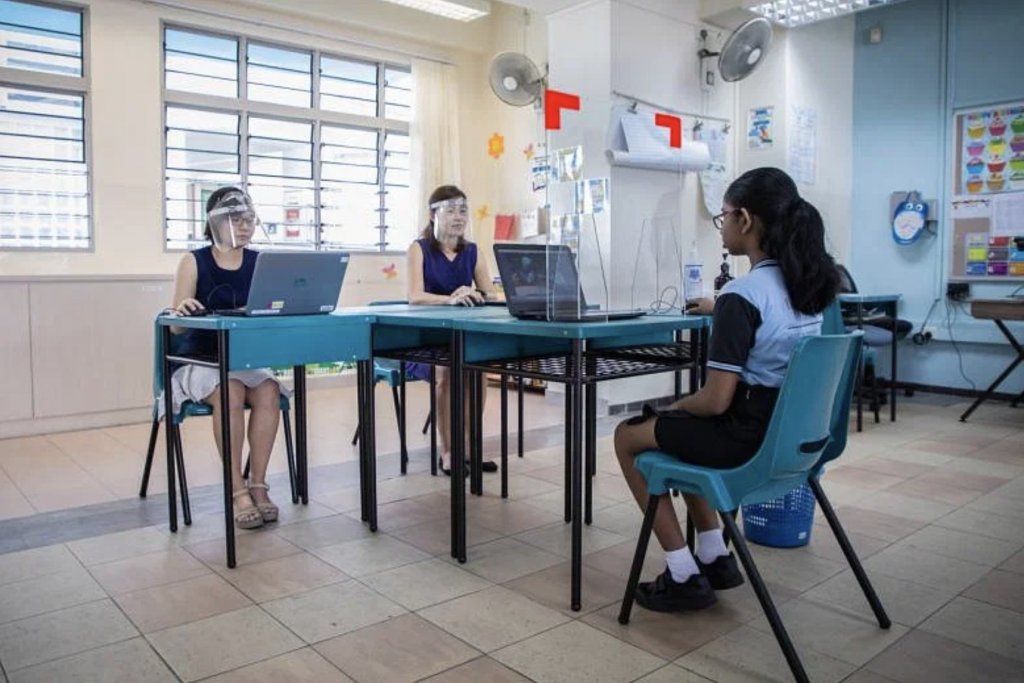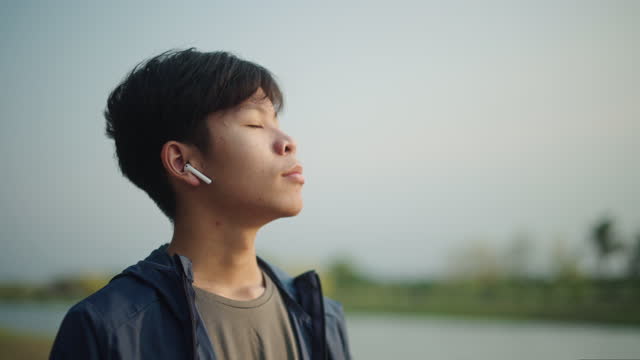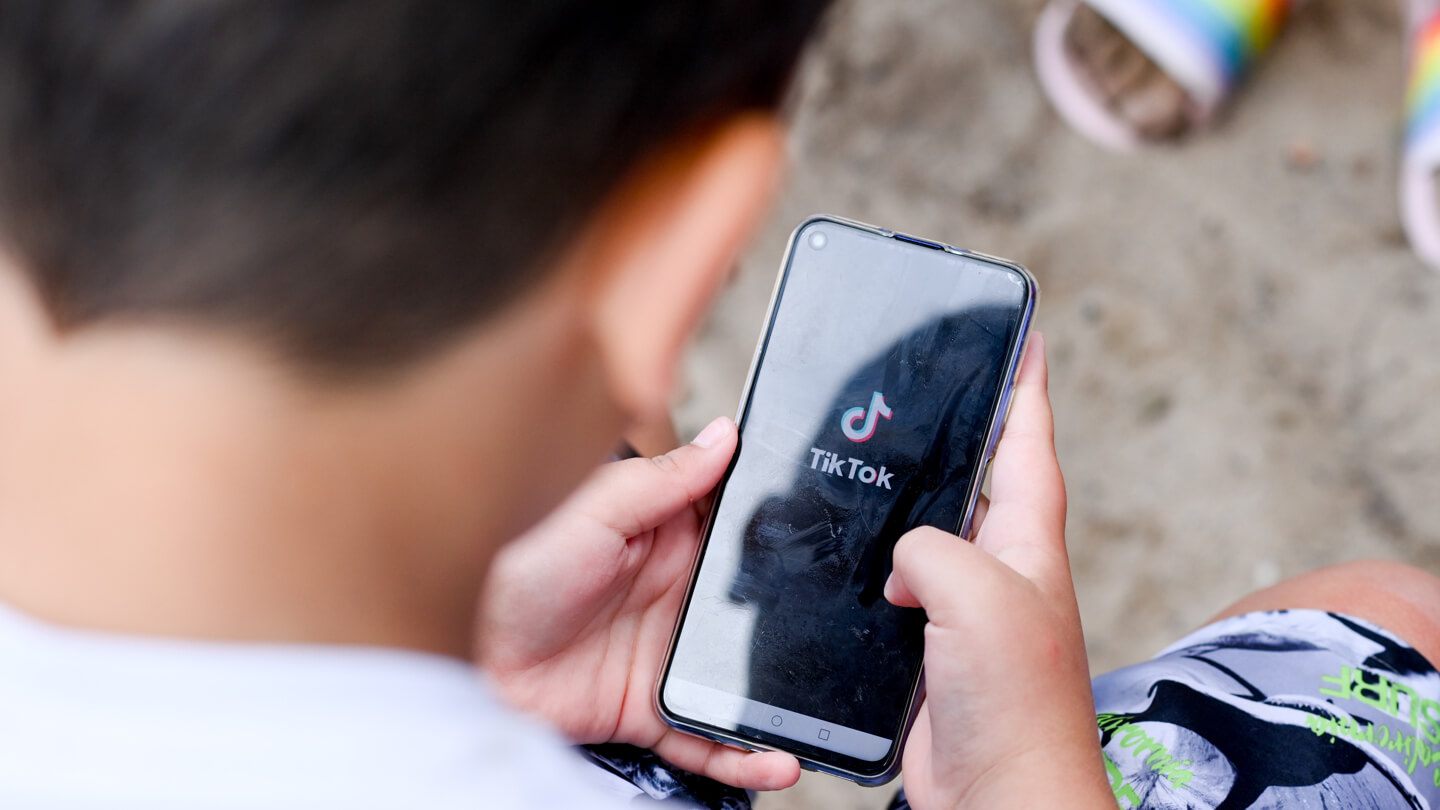Can Breathing Save the PSLE Oral Exam? This Ex-MOE Teacher Thinks So

Esther leaves us with no false promises, no hacks, no cheats.
It starts with a breath.
Not the triumphant kind — not yet. This one is shaky. It trembles inside the ribs of a 12-year-old seated in a sterile school waiting room, clutching her index cards, watching the minutes melt away. The walls are thin. Her turn is near.
She’s not the only one. Across Singapore, thousands of children will sit for the PSLE Oral on August 13 and 14 — a ritual that has become, for many, less a test of language and more a reckoning with fear. And in an era where kids are fluent in TikTok transitions but freeze when asked, “What’s your opinion?”, the pressure to perform feels heavier than ever.
We spoke to Esther Leng — veteran educator, Academic Director of English Ninjas, and unfiltered voice of reason — about what’s happening inside these young minds, what parents are getting wrong, and why everything starts with learning how to breathe.
▼Table of Contents
Why the PSLE Oral Feels So Scary

Source: NASCANS
“The biggest thing that feeds their anxiety is not knowing what to expect,” says Esther. For many students, the PSLE Oral marks their first brush with high-stakes public speaking — and it shows. “Imagine a whole room of students waiting their turn, feeding off each other’s nerves. It’s not just stress; it’s contagious.”
That’s why Esther recommends walking your child through the experience step by step — from the waiting room to the moment they sit in front of the examiners. “When they know what’s going to happen, they’re less likely to panic. It becomes familiar.”
The Power of Breathing (Yes, Really)
It may sound too simple to work, but one of Esther’s go-to tools for anxious students is box breathing — inhale for four counts, hold for four, exhale for four, hold again for four. “Some kids might need to start with two or three counts — and that’s okay,” she says.

Source: Getty Images
Why is it so effective? “When you tell a child ‘Don’t be anxious,’ the anxiety doesn’t magically disappear,” Esther explains. “But if you give them something else to focus on — like counting or tapping — it helps redirect their brain away from panic.”
And when words get stuck mid-exam? Esther tells students to simply pause and say, “May I take a moment to reset?” or “Can I take a deep breath?”
“The examiner knows you’re nervous — they’re human too,” she reassures.
Home is Where the Oral Practice Happens
One of the most powerful ways to prep for the PSLE Oral isn’t with flashcards — it’s around the dinner table.

Source: Grade Solution Learning Centre
“I always encourage parents to have conversations with their child. Face-to-face. Put devices away,” Esther says. These don’t need to be heavy chats. They can be as simple as asking, “What shall we do for National Day?” or “Did you see the fire at Toa Payoh? How would you have reacted?”
It’s not about testing their knowledge — it’s about practising opinion-sharing and logical thinking in a safe space. “Many kids don’t know what to say during oral because they’re not used to having opinions. These small conversations help them build that muscle.”
From TikToks to Tangents: Why Screen Time is Hurting Focus
Esther’s biggest concern? Shrinking attention spans.

Source: Allconnect
“I had a secondary student tell me, ‘Ms. Esther, I can’t read anymore. My brain keeps wanting to skip ahead,’” she says. “Because of TikTok and short videos, their brains are trained for quick hits of content. But PSLE Oral requires holding thoughts, reflecting, and structuring speech. That takes practice.”
The fix? Start small. Discuss a meme they shared, ask what they found funny, and take it from there. “Engage with them at their level first. Then you can stretch the conversation further.”
Esther knows the power of meeting kids where they are — even if that means scrolling through memes. “My niece and nephew love their devices,” she says. “So I send them memes. We laugh about them, and then we talk — Why is this funny? What’s going on here?” It’s a gateway, she explains, not the goal. By starting with what interests them, she opens the door to deeper conversations — the kind that build confidence, expression, and eventually, readiness for the PSLE Oral.
Why Small Classes and Big Hearts Make a Difference
With Singapore increasing recruitment for MOE teachers, the hope is that smaller class sizes can give children more one-on-one time to develop their communication skills.
“In a smaller class, a teacher can actually hear every student speak,” Esther says. “Six to eight students is ideal — enough for group ideas, but still enough time for each child to practice.”
But more than class size, it’s the teacher’s presence that matters. “A teacher with heart can see when your child is struggling and help them feel that, ‘Hey, I do have things to say. What I share matters.’ That shift is huge.”
What Parents Can Do Right Now
So what’s your role in all this? According to Esther, it’s not about drilling your child for performance — it’s about creating a calm, open space for growth.
“Let them know that whatever happens, you are for them. You’ll be there when they come out of the exam, open arms and all.”
Here’s your checklist:
-
Talk it out: Daily short conversations, not lectures.
-
Practice opinions: Ask what they think.
-
Make breathing a habit: Teach a grounding technique that works for them.
-
Set realistic expectations: Remind them that it’s just one step in a long journey.
-
Be their safe zone: Your child needs to know it’s okay to stumble — and that you’ll catch them when they do.
What Now, As the Clock Ticks Down?
View this post on Instagram
Esther leaves us with no false promises, no hacks, no cheats. Just this:
“Let your child know that whatever happens, you are for them. You will be there when they walk out of the exam room. With open arms.”
In the end, the PSLE Oral is not about perfection. It’s about presence. About showing up, scared but still willing to speak. And the most powerful tool we can give our kids?
A moment to breathe. A chance to be heard. A reason to believe their voice matters.
You can cram vocab. Rehearse lines. Print cue cards in Comic Sans if it helps. But when your kid is sitting there — heart pounding, palms sweaty, two examiners staring them down — the only thing they’ll have is their breath.
And that’s not fluff. That’s survival.
Esther Leng isn’t selling Zen. She’s selling realism. Teach them to breathe, and you give them a fighting chance. Not just to nail the Oral, but to handle life when it doesn’t come with a script.
So, forget the drills for a second. Sit down. Look them in the eye. Crack a meme. Ask them what they think. And when the room starts spinning, remind them to take a beat — and breathe.
Because maybe the bravest thing a 12-year-old can do this August… is speak up while their voice is still shaking.